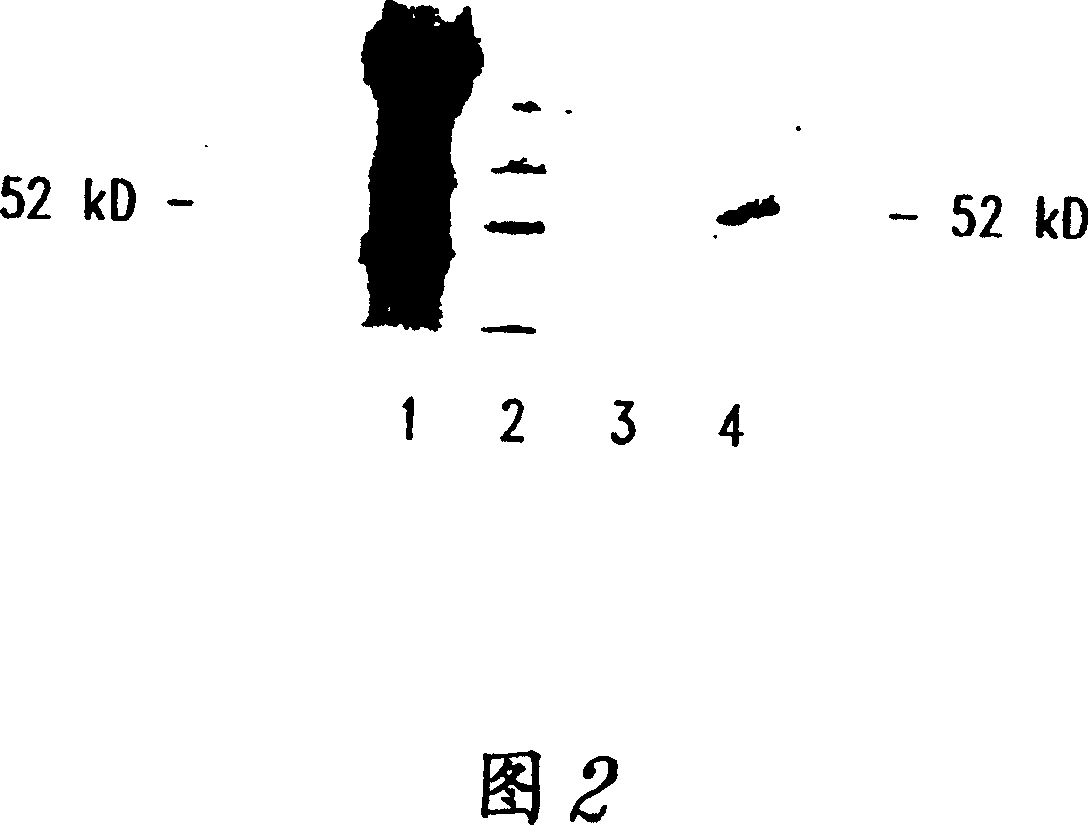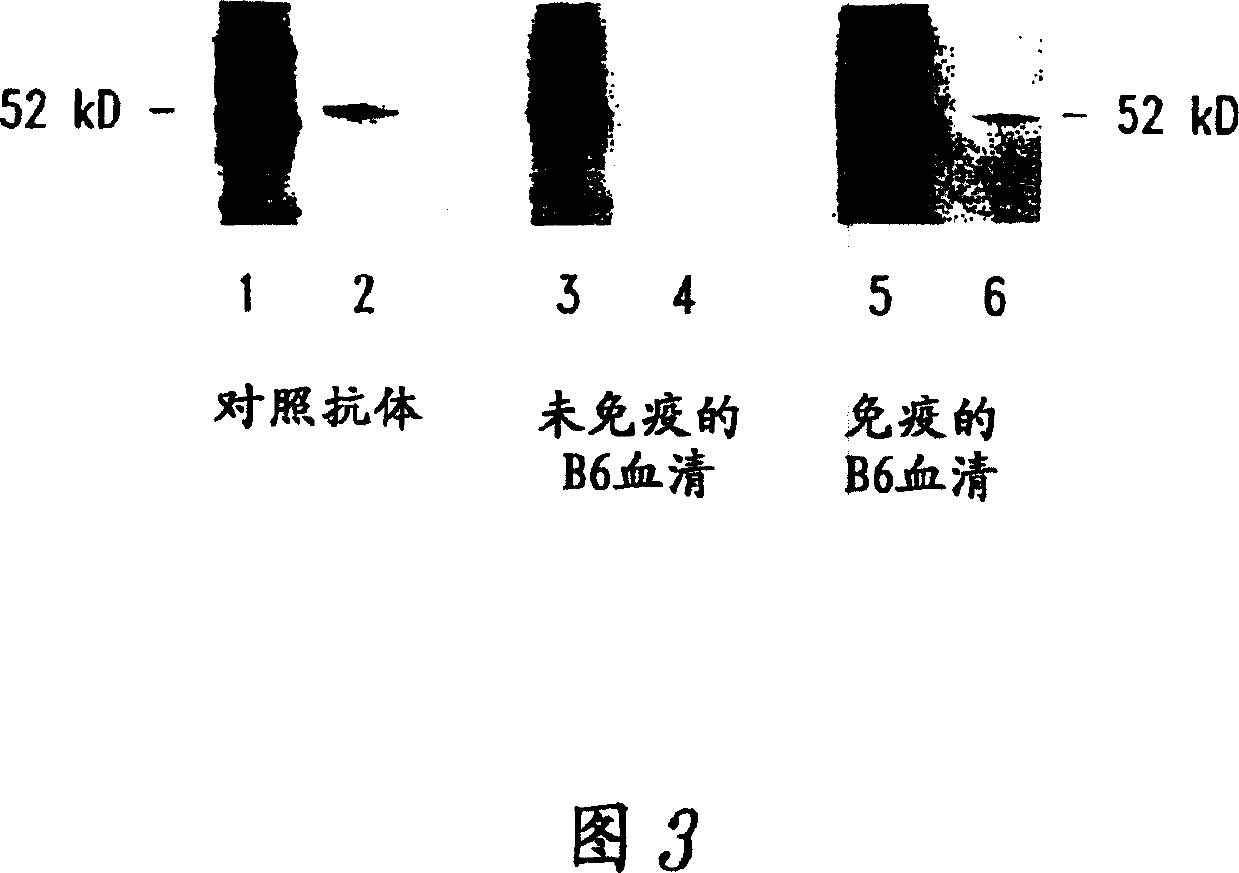Compositions and methods for WT1 specific immunotherapy
A compositional and specific technology, applied in the field of RM, ALLPAVSSL, immunotherapy for malignant diseases such as leukemia and cancer, MTSQL, can solve the problems that have not shown therapeutic benefit
- Summary
- Abstract
- Description
- Claims
- Application Information
AI Technical Summary
Problems solved by technology
Method used
Image
Examples
Embodiment 1
[0246] Identification of immune responses against WT1 in patients with hematological malignancies
[0247] This example illustrates the identification of preexisting immune responses in patients with hematological malignancies.
[0248] To assess the presence of pre-existing WT1-specific antibody responses in patients, samples from acute myeloid leukemia (AML), acute lymphoblastic leukemia (ALL), chronic myeloid leukemia (CML), and severe aplastic leukemia were analyzed by Western blot analysis. Sera from anemic patients. Sera were tested for their ability to immunoprecipitate WT1 from the human leukemia cell line K562 (American Type Culture Collection, Manassas, VA). In each case, immunoprecipitates were separated by gel electrophoresis, transferred to membranes, and probed with anti-WTA1 antibody WT180 (Santa Cruz Biotechnology, Inc., Santa Cruz, CA). This western blot analysis identifies potential WT1-specific antibodies in patients with hematologic malignancies. A repre...
Embodiment 2
[0259] Induction of antibodies against WT1 in mice immunized with a WT1-expressing cell line
[0260] This example illustrates the use of cells expressing WT1 to induce a WT1-specific antibody response in vivo.
[0261] Detection of preexisting antibodies against WT1 in leukemia patients strongly suggests the possibility of immunity to WT1 protein to elicit immunity to WT1. To test whether immunity to WT1 could be generated by immunization, mice were injected with TRAMP-C, a WT1-positive tumor cell line derived from B6. Briefly, male B6 mice were treated with 5 × 10 6 Tramp-C cells were subcutaneously immunized with 5×10 6 Cells were boosted twice at 3 week intervals. Three weeks after the last immunization, serum was obtained and spleen single cell suspension was prepared in RPMI 1640 medium (GIBCO) with 25 μM β-2-mercaptoethanol, 200 units of penicillin per ml, 10 mM L-glutamine and 10% fetal bovine serum.
[0262] Following TRAMP-C immunization, WT1-specific antibody r...
Embodiment 3
[0264] T in mice immunized with WT1 peptide H and induction of antibody responses
[0265] This example illustrates the ability of immunization with WT1 peptide to elicit a WT1-specific immune response.
[0266] Peptides suitable for eliciting Ab and proliferative T cell responses were identified according to the Tsites procedure (Rothbard and Taylor, EMBO J. 7:93-100, 1988; Deavin et al., Mol. Immunol. 33:145-155, 1996), which The program looks for peptide motifs with the potential to elicit a Th response. The peptides shown in Table I were synthesized and sequenced.
[0267] Table I
[0268] peptide
sequence
note
Mouse: p6-22
RDL NALLPAVSSLGGGG
(SEQ ID NO: 13)
relative to the human WT1 sequence
has 1 mismatch
Human: p6-22
RDL NALLPAVPSLGGGG
(SEQ ID NO: 1)
Human / mouse: p117-139
PSQASSGQARMFPNAPYLPSC
LE (SEQ ID NO: 2 and 3)
Mouse: p244-262
GATLKGMAAGSSSSVKWTE
(SEQ ID NO: 14)
...
PUM
 Login to View More
Login to View More Abstract
Description
Claims
Application Information
 Login to View More
Login to View More - R&D
- Intellectual Property
- Life Sciences
- Materials
- Tech Scout
- Unparalleled Data Quality
- Higher Quality Content
- 60% Fewer Hallucinations
Browse by: Latest US Patents, China's latest patents, Technical Efficacy Thesaurus, Application Domain, Technology Topic, Popular Technical Reports.
© 2025 PatSnap. All rights reserved.Legal|Privacy policy|Modern Slavery Act Transparency Statement|Sitemap|About US| Contact US: help@patsnap.com



